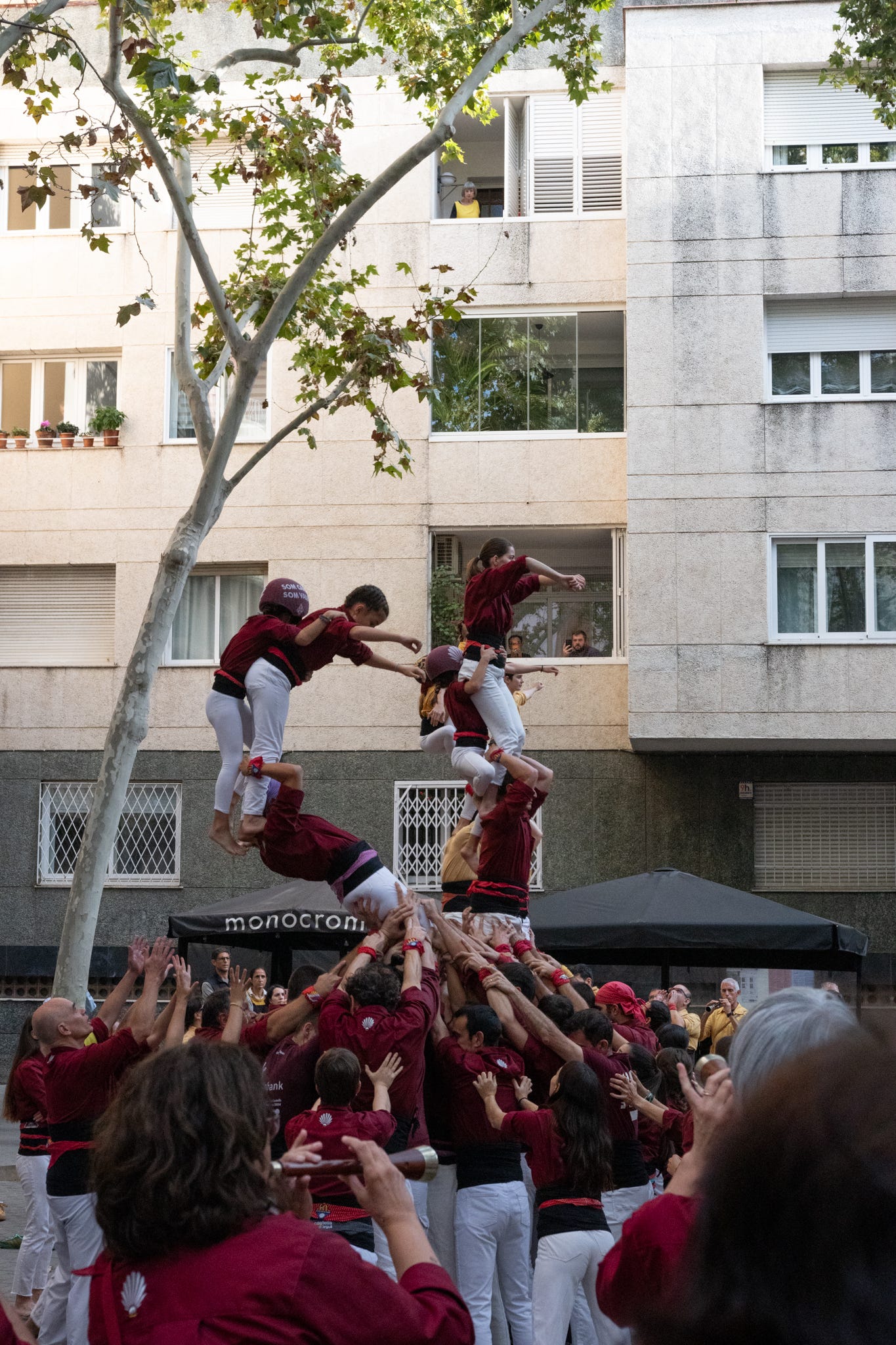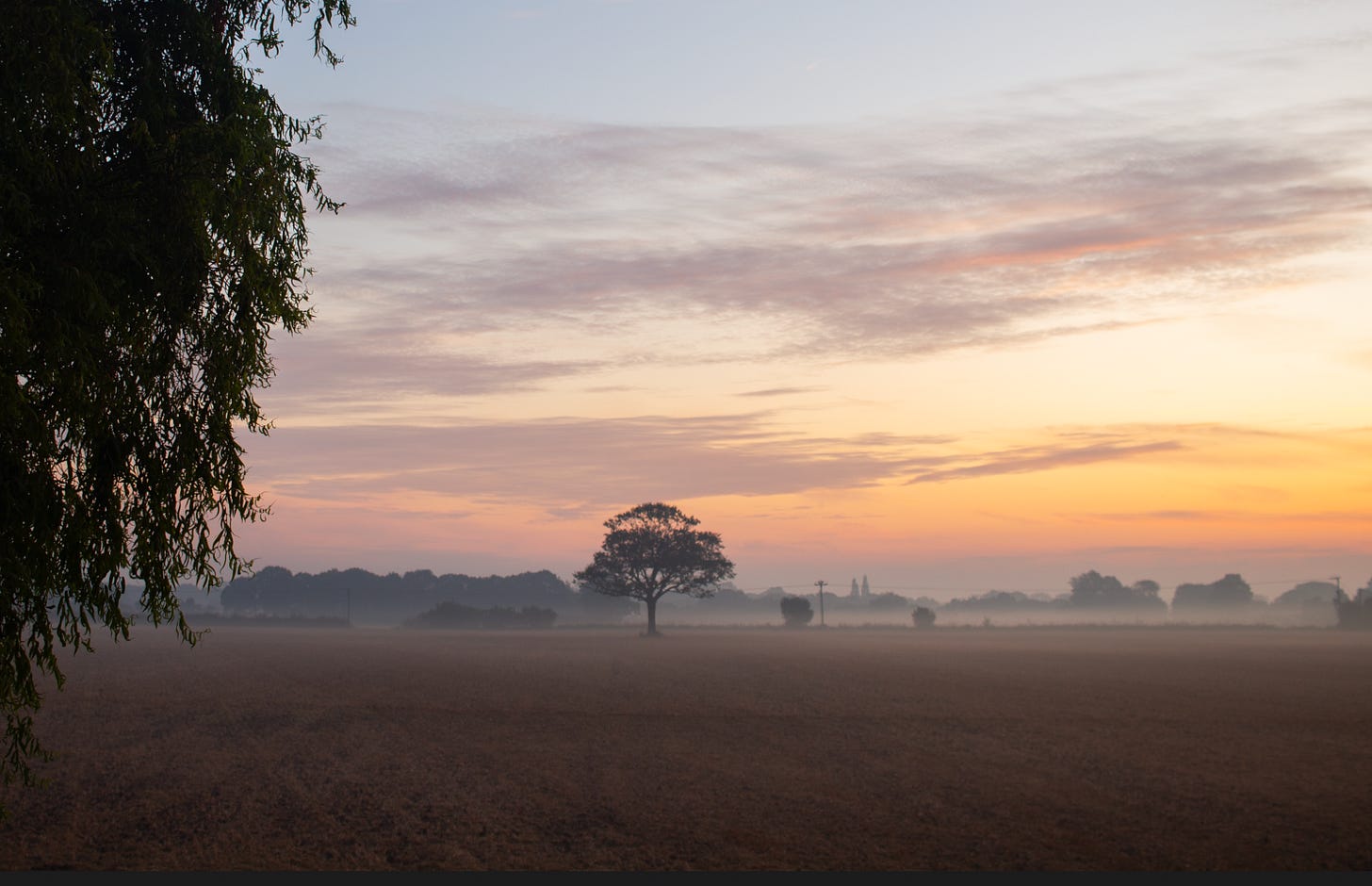These incredible human towers show community coming together.
An awe-inspiring sight.
People.
Pushing, leaning, heaving.
People, pressing together, moving together, breathing together as one, something organic coalescing into a single shape.
People, climbing over others. Locking into position on shoulders, each becoming their own level of a tower growing from the human foundation.
People, climbing over them. With each step, the tower rises. For a moment, there is a swaying - a trembling - and the onlookers collectively hold their breath. But it steadies. The tower rises higher.
Until the smallest person - no older than five or six - begins the final ascent.
Tiny hands and feet, seeking and grasping knees, waists, shoulders. Deftly clambering to the very summit of a tower of people, the watching crowd wordless and transfixed.
And then, at the very top, when it seems the slightest breeze can bring it all down, the smallest person raises a tiny hand into the air.
The watching crowd erupts with applause and cheers. A band of pipers and drummers strikes up a tune. The tower begins to disassemble itself.
First its crowning achievement - the smallest child - shimmies down, sliding to the base where they are caught and lifted to safety. Then the upper levels of the tower unfold and descend in unison.
Then the mid levels. Then the lower levels.
Then the base - the solid foundation of the human tower - disperses, and becomes once more just a crowd of people.
People of all ages, celebrating their achievement. High-fiving, hugging, faces split into laughs of relief and joy.
The tower is nothing, until it rises once more at the will of its people.
This is the castell - the human tower of Catalonia.
Of all the customs and traditions I have seen in my month in Barcelona, this is by far my favourite. Walking around the city, you stumble across them when you least expect it. Perhaps you hear the pipe music first, echoing somewhere around the sunlit streets. Then you turn into a plaza and the crowd greets you - both the enraptured audience, heads tilted skyward, and the thronging, living tower of people that rises high above the apartment buildings.
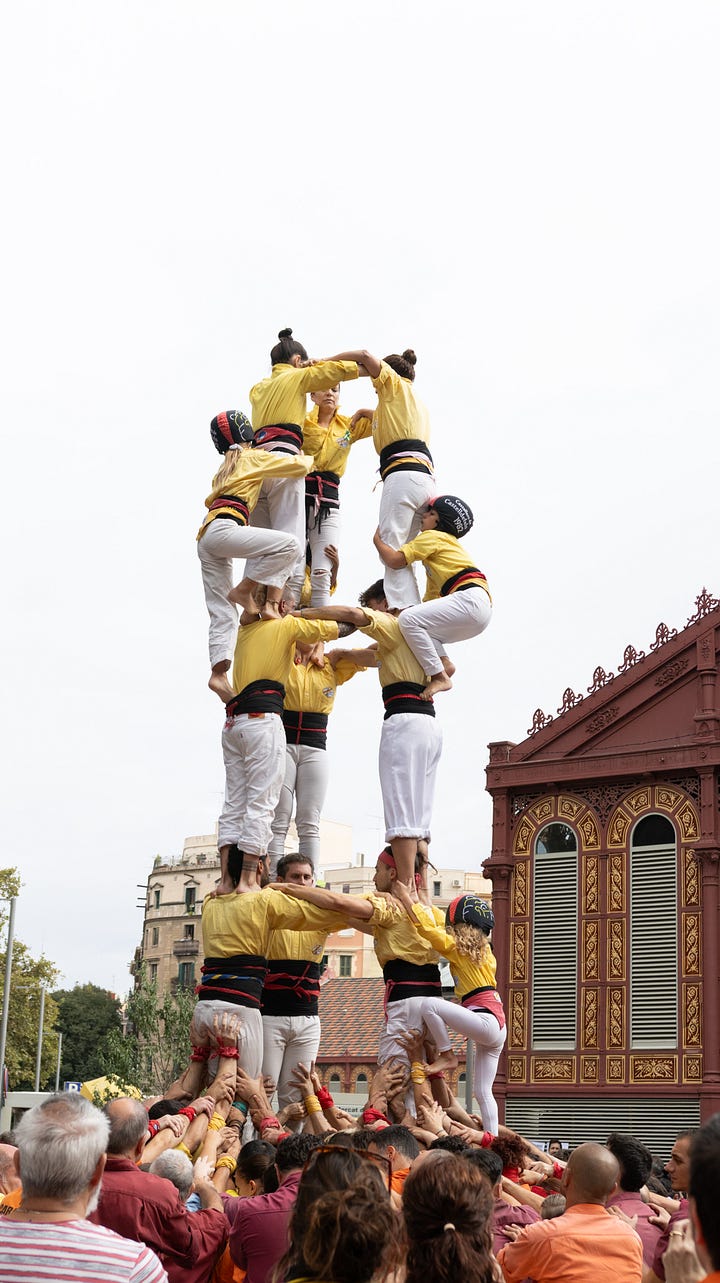
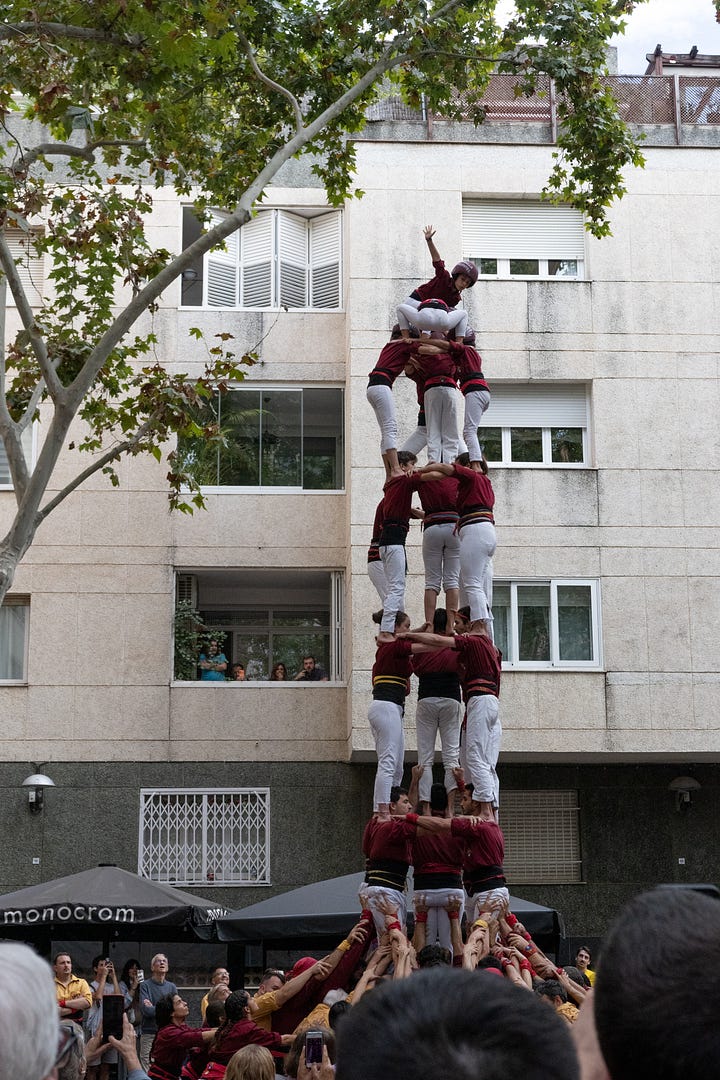
The event is competitive. Multiple teams vie to build the most complex, tallest tower. They begin with a handful of people, shoulder on shoulder. They culminate in vast organic networks of human structures and pillars. And each time, the smallest child ascends to raise a hand at the summit.
During national events, the largest castell - reaching up to ten levels - can be made of up to 500 people on the base alone.
It’s an astonishing sight. I can only imagine how it feels to be a part of it.
It is not without its danger. A hint of instability and the tower can collapse. Broken bones are common, and a child fatality in 2006 resulted in a law requiring helmets be worn by the smallest. The small medical tent and ambulance waiting nearby did little to allay my concerns while I watched them. It’s a nail-biting sight.
But perhaps the most striking aspect of all is the community.
When a plaza is hosting a castell, it bursts with energy. People of all ages turn out to watch. It’s just as exciting for the elderly folks watching as it is for the children scrambling up the tower. It’s a tradition that traces its routes back hundreds of years, and today castells are declared by UNESCO to be amongst the Masterpieces of the Oral and Intangible Heritage of Humanity.

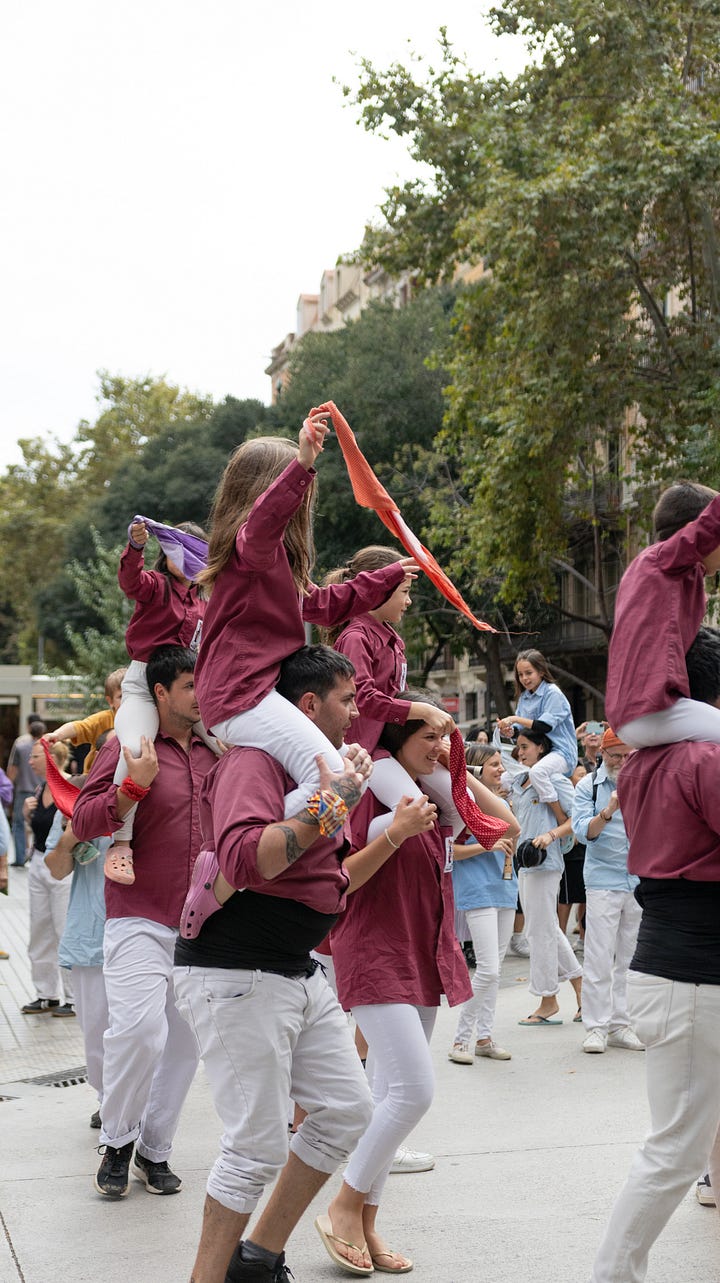
Above all, it’s a union. For a castell to work, every person has their place. It’s a structure that requires deep focus and intense collaboration. It would be impossible to make without a strong sense of social community. Without loved ones holding firm as a rock solid foundation, the children would be unable to ascend.
This is more important everywhere now than it has ever been. Yet it is also the target of those grasping for power. Populist, far-right governments thrive on social division. They thrive on splitting communities, pitting them against each other and fracturing those foundations. We must resist this at every moment.
Earlier this year I wrote about the famous sycamore tree of Sycamore Gap, and its felling that sparked national outrage. The tree was an iconic symbol of Britain, and I am certain that many of you reading have a similar affinity with a tree in your own neighbourhood. For me, it is this oak tree that stands outside my childhood bedroom window, in Essex:
The field in which it stands - and has stood for hundreds of years - has been tended by the local farmer for longer than I can remember. But as is the case with much green space in the UK, the council is determined to smother it with concrete and turn it into a grid of a thousand new houses.
This green space is more than just a field. It is a home for skylarks, butterflies, beetles, buzzards, and for the local community to relax in. It is an oasis nestled within a network of a rail lines and busy roads.
If it was destroyed, the resulting pollution and habitat loss would be disastrous to both us and our already fading natural world.
So it has been joyful to see the local community unite with spirit and vigour to fight to protect it.
Heads have been hunched closely in standing room only meetings. Fundraising events have brought people together not just to raise money for a consultation to challenge the development plans but also for a sense of belonging, place, and identity.
When I watch the castells and I see the strength with which people come together to create a single structure, I can’t help but feel uplifted. And as our world continues to shift and fracture and malicious groups seek to take advantage, we will all need this strength of community in the times to come.
If you want to support the fields and the oak tree of my childhood, to stand up for nature and help preserve the woods and wildlife of Britain, you can. The action group has set up a GoFundMe to raise £10,000 for a consultation. They have already raised over £6,200.
If you are receiving this via email, you are one of 1,300 people to do so. If everybody who receives this email can spare just £2.99 - much less than the price of a cup of coffee - we’ll absolutely smash the target. You can help save St John’s Fields here.
In fact, if you donate anything to this cause, let me know afterwards by responding to this email or by emailing me directly at hello@thomaswinward.com, and I’ll gift you a paid subscription to Urban Nature Diary where you can read all my previous posts for free.
Let’s use this community to support another.
In other news…
My short film about urban birding in London - The Birdwatchers - is screening at a couple of events this month.
Conserve Sauk Film Festival, Wisconsin, USA. On Thursday, November 6, 2025 from 5:00pm to 7:30pm, at Carnegie-Schadde Memorial Public Library in Baraboo, Wisconsin. Book tickets here.
Kendal Mountain Film Festival, UK. Fri, Nov 21st, 4:15 PM at Brewery Arts - Studio; and Sat, Nov 22nd, 11:45 AM at The Box - Kendal College. Book tickets here. I’ll be there too - let me know if you’re around. It would be great to meet you.
My film The Essex Ways - about James Lawrence’s 400km walking adventure around Essex to reconnect with our home county - is available to watch for free on YouTube.




